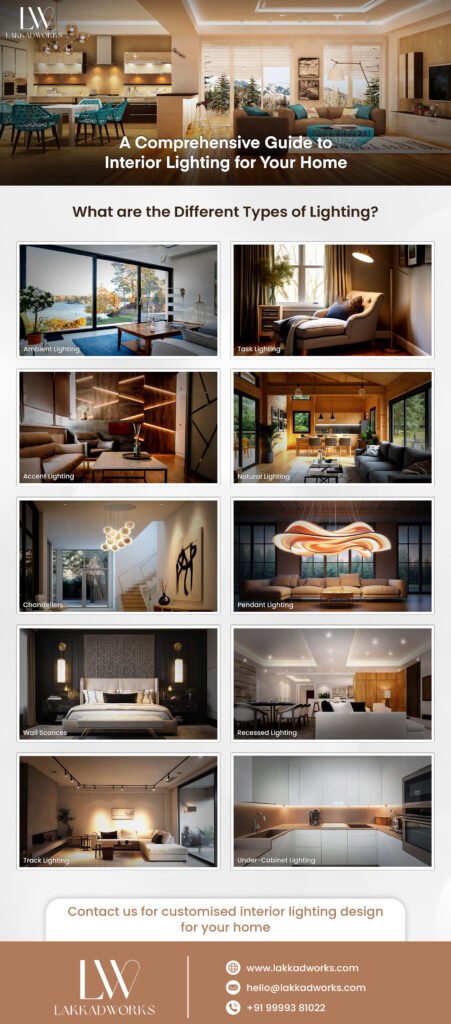April 11th, 2024
Lighting is a key element in home interior design. It sets the mood, defines spaces, and can dramatically transform a space, making it feel warm and welcoming. However, with a wide variety of lighting options available in the market, it can be confusing to choose the right one for your space.
Whether you want a complete home renovation or are simply looking to design a single room, understanding the different types of lighting and how to use them effectively can help you brighten up your space. That’s why the best residential interior designers from our interior design firm have created this comprehensive guide to help you understand the different types of lights in home interiors and share some bonus tips as well. So, let’s get started!
Psychological Effects of Lighting
Light has a surprising impact on our well-being, affecting not just our home interior but also our mood and sleep to our productivity.
While strong light can intensify both positive and negative emotions, harsh lighting at night, including the blue light emitted by electronics, disrupts sleep patterns and increases the risk of sleep disorders. Our best residential interior designers recommend using apps that filter out blue light on your device to minimise these effects.
Studies have shown that students and workers perform better and feel happier in spaces with ample natural light. Adjusting classroom lighting to be brighter and less intense can also help the students stay calm and well-behaved. It happens because light influences the production of neurotransmitters in the brain, which in turn affect mood, behavior, and sleep.
Illuminate Your Space with the Best Lighting Fixtures!
Illuminate Your Space with the Best Lighting Fixtures!
Understanding Your Needs for Interior Lighting
Luxury residential interior designers usually consider how you’ll be using each space before deciding on any specific fixtures. Here are some questions to ask yourself:
- What activities will take place in the room?
Reading, cooking, socialising, or watching movies require different lighting fixtures.
- What is the natural light situation?
Rooms with ample sunlight may require less artificial light, while other rooms might require more.
- What is the overall style of your home?
Choose fixtures that complement your existing décor, whether it’s modern, traditional, or a blend of the two.
What are the Different Types of Lighting Fixtures?
Ambient Lighting
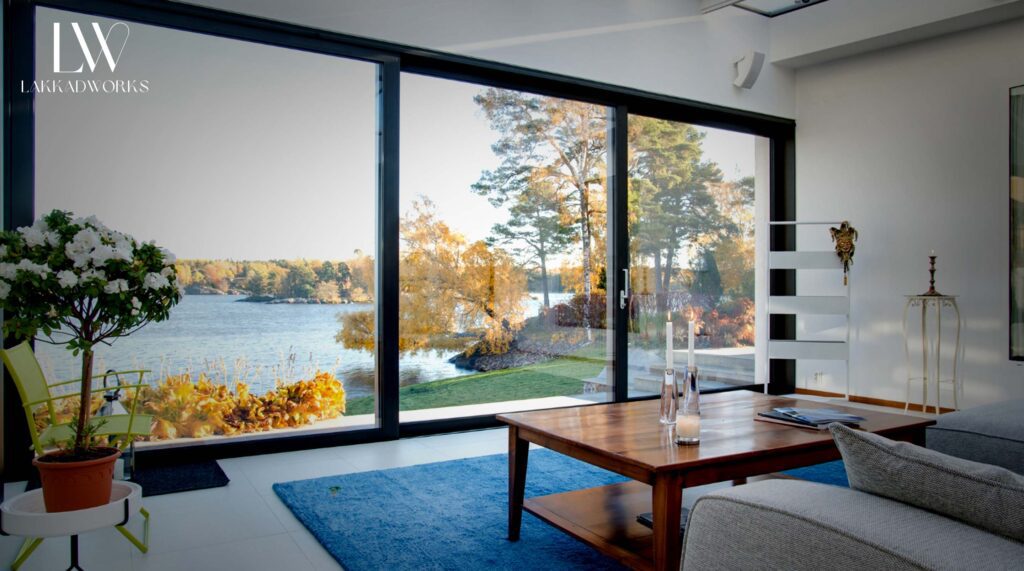
This is probably the most basic and essential form of lighting that interior design firms use for any space. Ambient lighting is your room’s primary source of illumination, providing overall brightness for navigating space.
Some common examples of ambient lighting include ceiling fixtures, chandeliers, etc. You can use a large chandelier in your dining room to provide ample light for meals and conversation.
Task Lighting
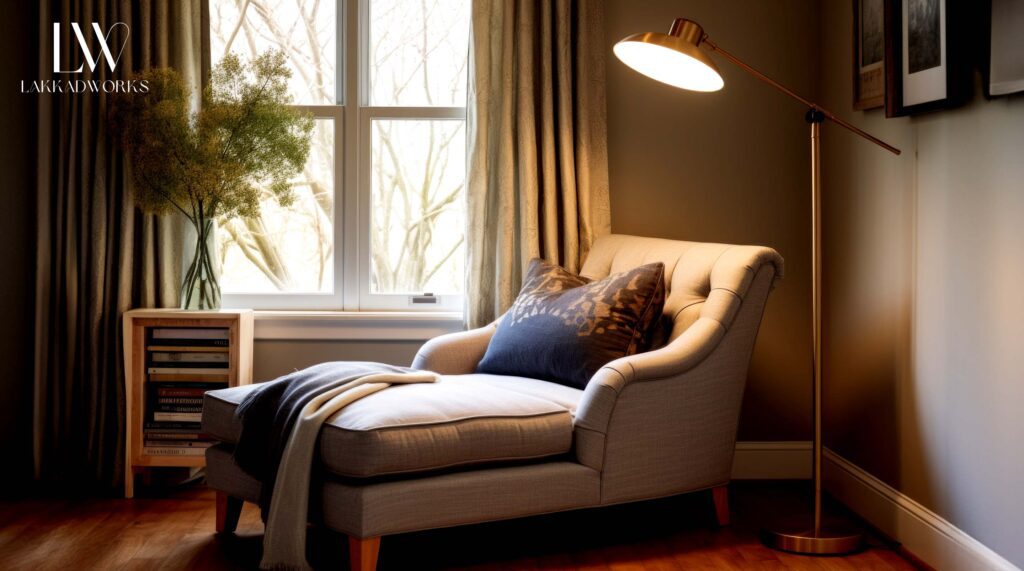
Luxury residential interior designers use this lighting to provide focused lighting in specific areas of a room and perform tasks like reading or cooking.
Table lamps, floor lamps, etc., are some of the most common task lights. For example, you can use a swing-arm lamp on your home office desk, which can act as a task lighting for detailed tasks.
Accent Lighting
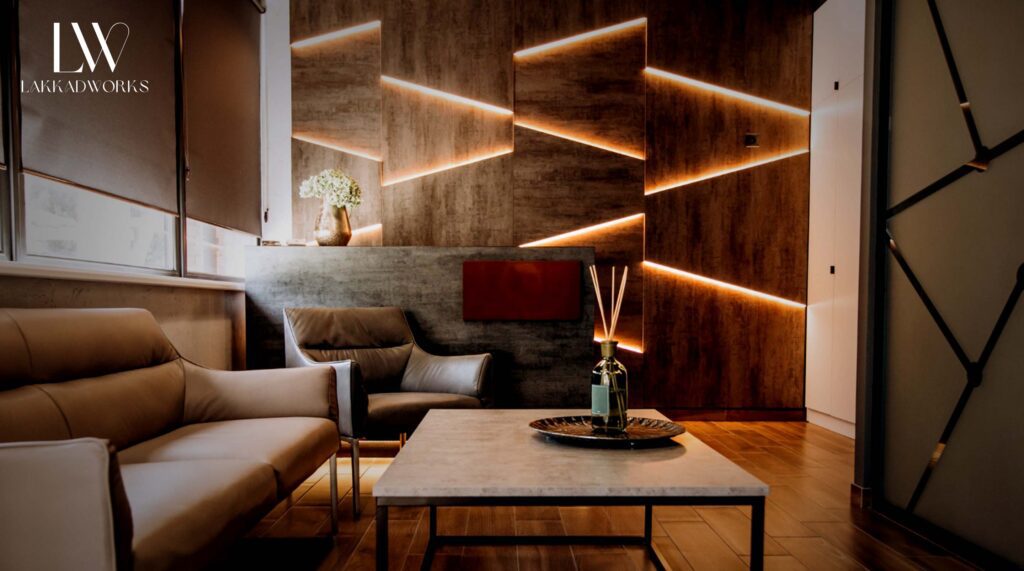
If you want to draw attention to a particular object, such as a painting, sculpture, or architectural detail, accent lighting is a great option. This type of lighting helps interior design firms to incorporate depth and visual interest into a space. Our best residential interior designers usually use minimalistic light fixtures to keep the core emphasis on the accent piece.
Recessed lights strategically placed behind a bookshelf in the living room can work as accent lighting and showcase your favourite collection.
Natural Lighting
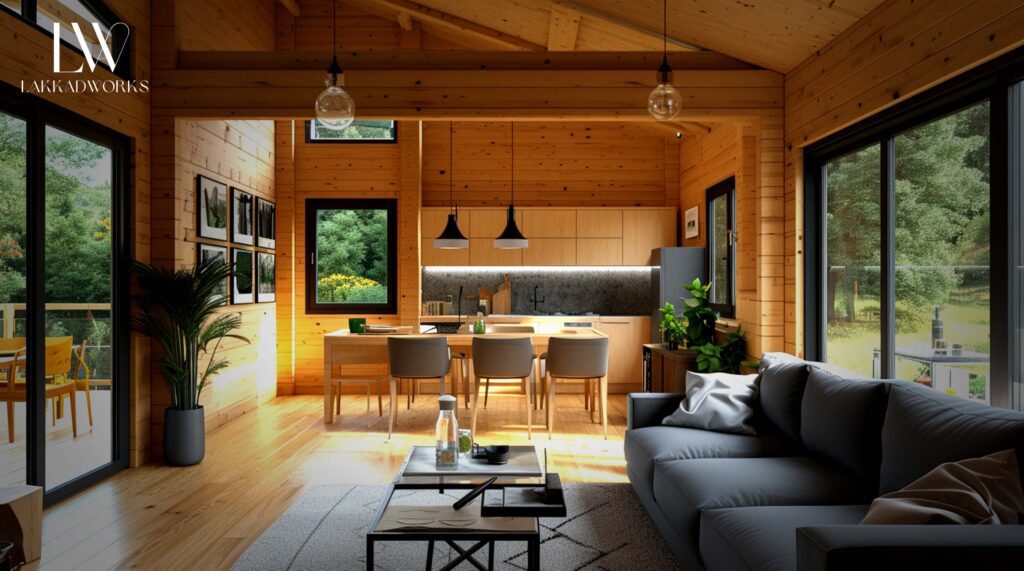
This is the most desirable form of lighting used by the best residential interior designers. Natural sunlight provides a warm tone and brightness that is both comforting and energising. Keep your windows clear and use light-coloured curtains or blinds to maximise sunlight in your room interior.
If you want a modern organic interior, natural lighting is the best source of light you should consider.
Chandeliers
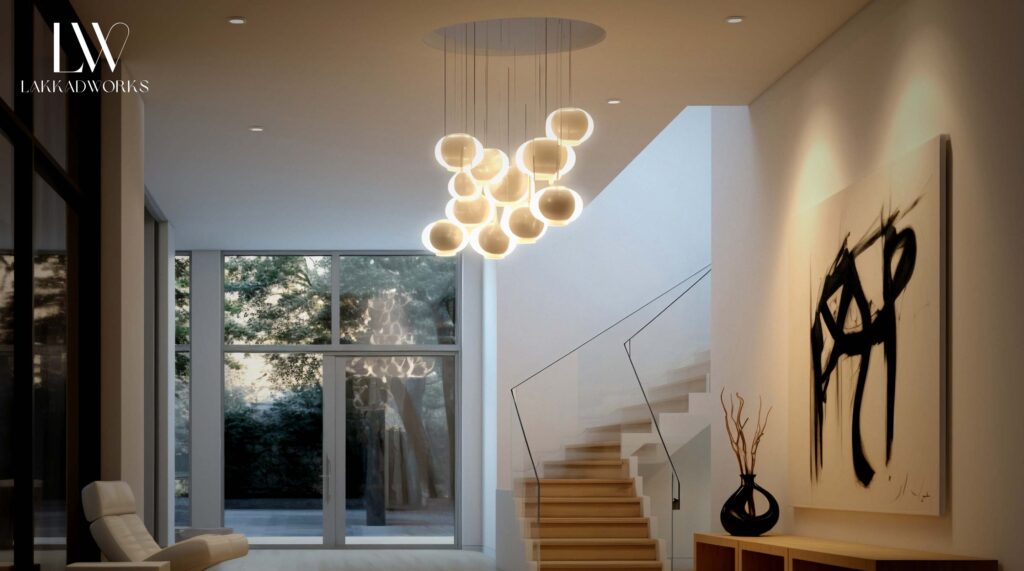
Chandeliers are a classic form of lighting that can make any room element sophisticated. They are typically used in dining rooms or entryways to provide a focal point and create dramatic effects.
Interior design firms commonly use chandeliers to bring a luxurious vibe to your home decor.
Pendant Lighting
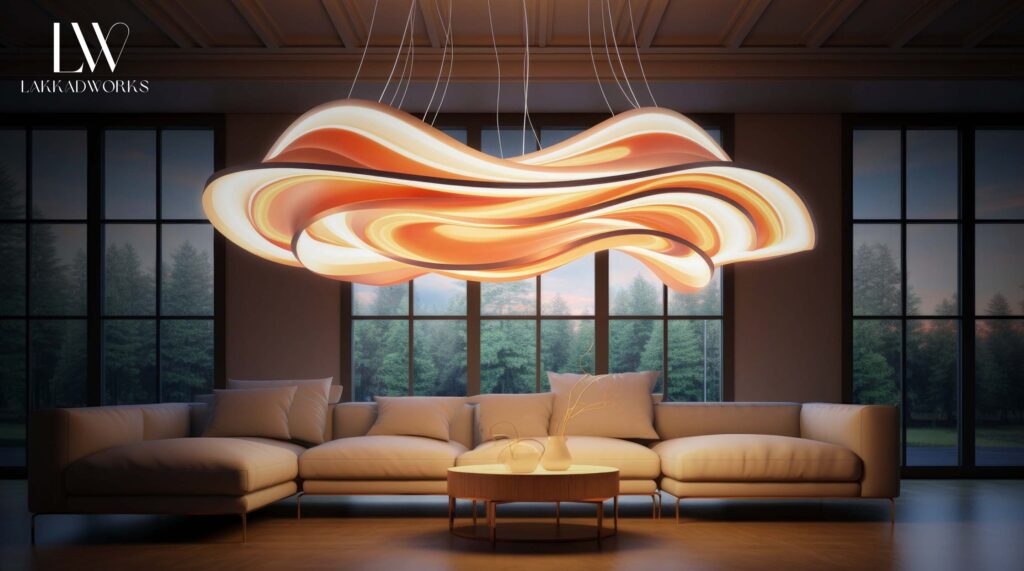
If you don’t like the amount of space chandeliers require but still want the grandeur, you can consider installing pendant lights. Suspended from the ceiling by a cord, pendant lights offer a more casual alternative to chandeliers.
Pendant lighting is a versatile form of lighting that luxury residential interior designers use in various settings, from kitchens and living rooms to bedrooms and entryways. They come in different sizes and styles, making them a good option for adding character and personality to a space.
Wall Sconces
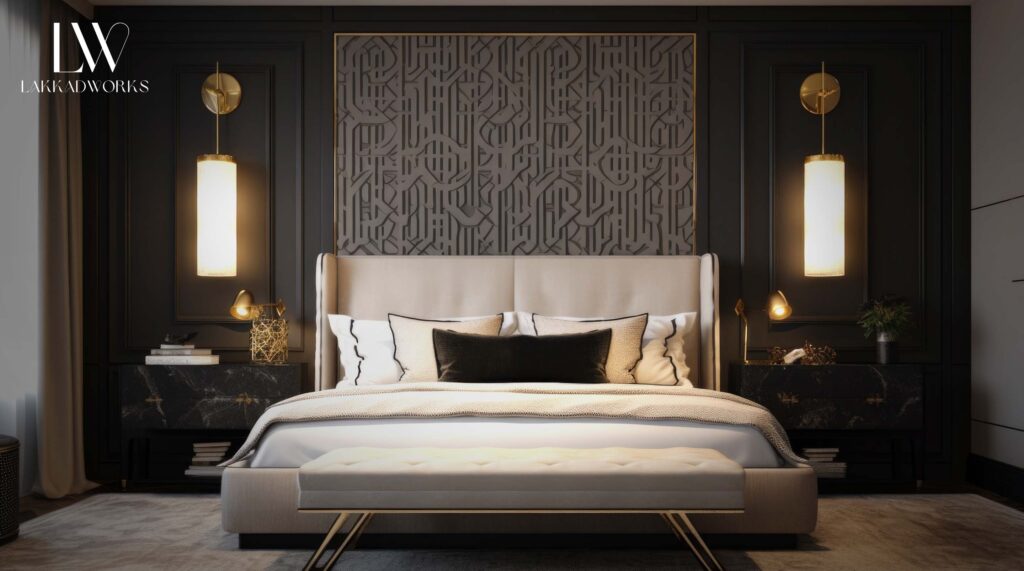
If you want to add ambient lighting to a room without taking up valuable floor space, wall scones are an excellent choice. Mounted directly on the wall, sconces provide ambient or accent lighting to create a warm, inviting atmosphere.
Wall scones are currently on trend to create a luxury interior for hallways, bathrooms, and above-bed frames.
Learn more about the latest interior design trends from our best residential interior designers: Top 11 Interior Design Trends for 2024
Recessed Lighting
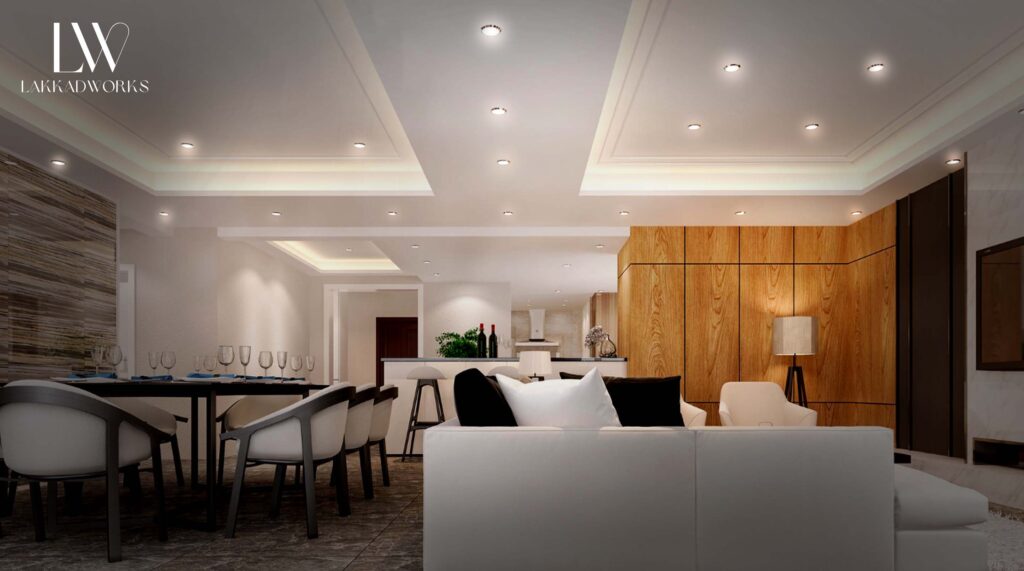
It is a sleek, modern form of lighting designed to blend in with the ceiling. Recessed lighting is a great way to add ambient lighting to a room without detracting from the overall aesthetic.
These lights offer a clean, modern look and are ideal for general and accent lighting throughout the home.
Track Lighting
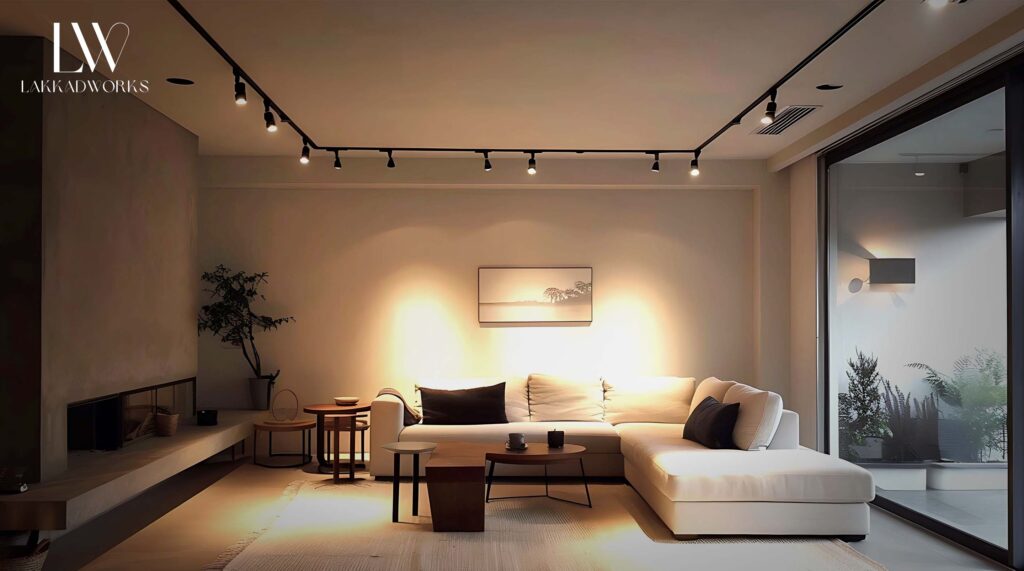
Track lighting is a flexible and versatile form of lighting that interior design firms often use to highlight specific areas of a room. You can adjust the direction and number of lights on a track to highlight artwork or create task lighting in kitchens.
Under-Cabinet Lighting
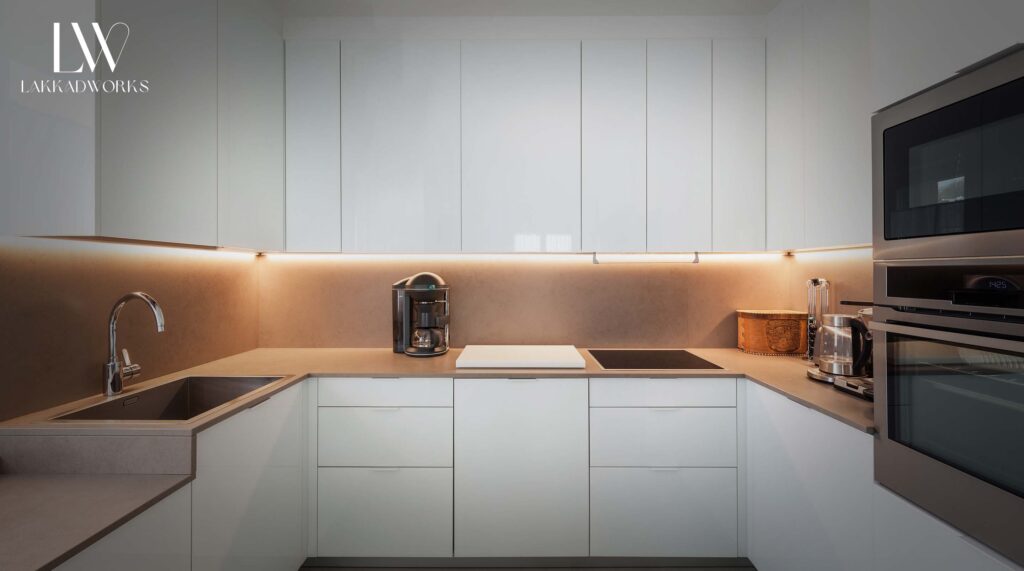
This functional lighting option adds a warm glow to kitchen countertops, making food preparation and cleanup easier. Interior design firms and luxury residential interior designers typically install this type of light underneath cabinets in luxury kitchen interiors.
Ready to transform your storage solutions?
Pro Tips from the Best Residential Interior Designers to Effectively Utilise Lights for Home Interior
- Layering is the Key: Combine different types of lighting to create a balanced and inviting space.
- Dimmers are Your Friend: Give yourself control over the mood and ambience with dimmer switches.
- Consider Colour Temperature: Choose bulbs with a warm white colour temperature for a cosy feel and cooler temperatures for task areas.
- Don’t Forget Style: Lighting fixtures should complement your existing décor. Consider the finish, material, and overall design when making your selections.
- Utilise Natural Light: Make the most out of natural light wherever possible and strategically place furniture to avoid blocking windows.
The Bottom Line
Lighting design is both an art and a science. Unless you’re simply replacing bulbs, it’s best to consult a professional when revamping your home’s lighting. Installing new fixtures often requires running new wires, adding circuits, or mounting fixtures, all of which should be done by a qualified professional to avoid electrical hazards. A home interior design consultant will prioritise safety, aesthetics, mood, and functionality when designing your lighting scheme.
Contact Lakkadworks, a leading interior design firm that offers A-to-Z home interior design services across India. We have the best residential interior designers to design customised lighting plans for your home interior, incorporating your specific needs and aesthetic preferences. You can also avail our turnkey interior services, customised modern luxury furniture, modular kitchen, and more. Visit our website and schedule your first free initial consultation to discuss your project.
